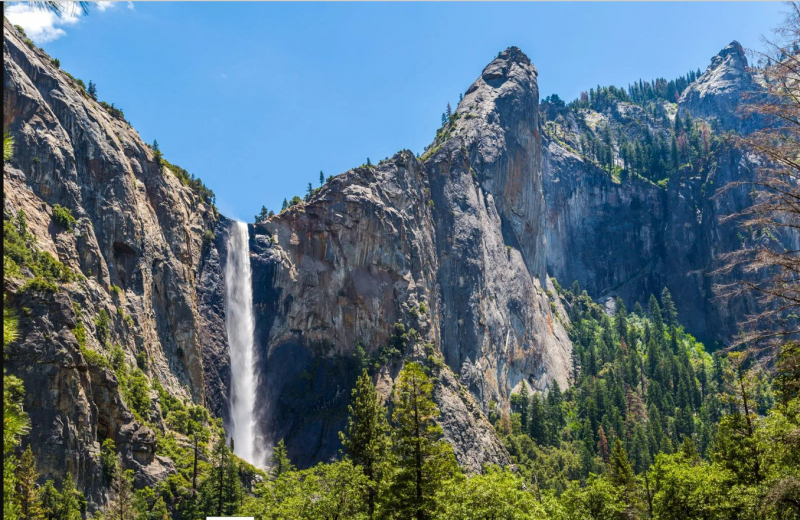Ribbon Falls
As the largest single-drop waterfall in North America, Ribbon Falls is named the longest waterfall in Yosemite National Park in California and falls from a rock west of El Capitan.
Ribbon Falls's water source is nourished by melting winter snow. Thus, despite being dry for most of the year, the waterfall still stands at a breathtaking 1,612 feet (491 m) in spring. During particular years in the winter months, an ice cone develops at its base similar to the cone that normally forms beneath Upper Yosemite Falls. They can reach depths of 200 feet compared to the maximum depth of the ice cone below Upper and Lower Falls of 322 feet.
With a total height of 1,612 feet, Ribbon Falls is one of the tallest unbroken waterfalls in the United States and the tallest steep falls on earth. Ribbon Creek drains a region of about 4 square miles immediately west of El Capitan, the body of water that crosses Yosemite Valley at a height of roughly 3,000 feet above the valley floor. The creek flows down a cork-shaped plain of rock that deflects the falls and falls to the right of the original stream as it flows out of the valley's edge. The stream makes contact with the cliff face for the first 200-300 feet of the vertical of the falls, then free-falls for more than 1,000 feet before erupting into a steep strip.
To conclude, Ribbon Falls:
- The largest single-drop waterfall in North America and the longest in Yosemite National Park in California.
- The water source of Ribbon Falls is nourished by melting winter snow.
- With a total height of 1,612 feet, Ribbon Creek drains an area of approximately 4 square miles just west of El Capitan.











